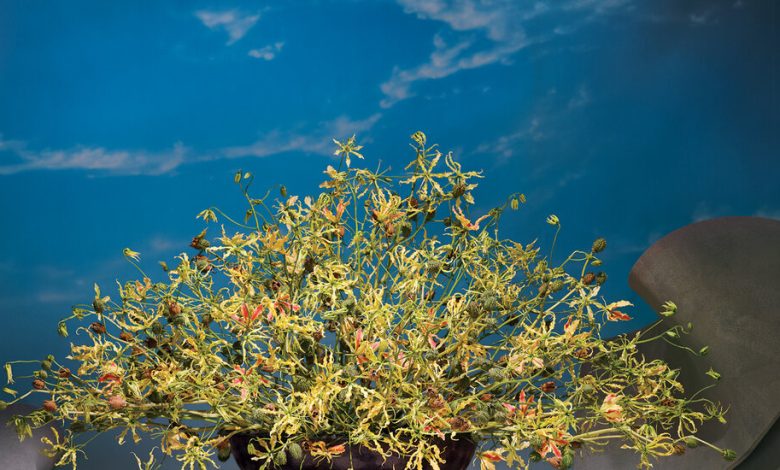The Lethal Beauty of the Gloriosa Lily

IN THE REALM of flowers, there are the known quantities: staid white lilies for funerals; red roses for traditional expressions of romantic love; fusty carnations for prom boutonnieres. But there are also those more complex blossoms whose symbolism and aesthetic character are altogether less familiar, and it’s to this latter group that the gloriosa lily belongs. At once delicate and flamboyant, beautiful but somewhat creepy, the gloriosa lily, a.k.a. Gloriosa superba — which is not a true lily at all but a species of the autumn crocus family Colchicaceae — adds a showy, if vaguely menacing, glamour to floral arrangements and gardens. Bright and dramatic, the blooms are what Gary Page, a partner in the New York Flower Group, a wholesale flower purveyor (of which his longstanding namesake company is now a division), calls “visually stimulating,” and have accordingly found favor with avant-garde floral designers catering to our moment’s taste for wild, imaginative assemblages.
Among that cohort is the Brooklyn-based floral artist Joshua Werber, who has featured the gloriosa in arrangements for everything from a bat mitzvah to his sister’s wedding. The bloom’s indeterminate nature, he says, is central to its appeal: “A regular lily reads so specifically as a lily and has all the connotations that come with that, whether religious or funerary.” By contrast, a gloriosa is unique and unusually expressive, he says, characterized by a “whimsical elegance.” The deciduous plant, whose climbing vines sprout from a fingerlike tuber, tends to scramble up other plants or trellises, clinging to them with vibrant green leaves that have grasping tendrils at their tip. From these long, slender stems grow solitary flowers shaped like upside-down bells, whose six discrete tepals (the term is used when a plant’s sepals are undifferentiated from its petals) are bent backward and swept upward, bringing to mind an umbrella that has been blown inside out in a gale. And perhaps most charming of all: Six quirky little stamens with prominent anthers jut out from the blossoms like a set of tiny limbs.
The flower thus appears organic and peculiar, tentacled and animalistic. “It has this airy, almost butterfly look,” says Ren MacDonald-Balasia of Renko, a Los Angeles- and Honolulu-based floral design studio. In an arrangement, the gloriosa’s insectlike qualities can evoke a flower in a horror movie. “It feels like an infestation of spiders … that they’re taking something over, or colonizing,” says the New York-based sculptor turned floral designer Emily Thompson, who is known for her painterly creations. “There’s something exciting about this particular flower; it’s so mysterious,” she continues. “It doesn’t look like a thing we’re familiar with from old master paintings, or really anywhere.”
THE GLORIOSA LILY originated in tropical regions of Africa and tropical and temperate Asia, and now grows naturally in other parts of the world, like Southern Florida and Australia, where it is considered an invasive weed. It arrived in England around 1690 and has been cultivated in Europe since at least the 18th century. Gloriosa Rothschildiana, a well-known cultivar of the flower, was reportedly introduced to England by Lionel Walter Rothschild, the second Baron Rothschild — a British banker, zoologist and politician, and a member of the famous financial family — in the late 19th or early 20th century. This variety, brilliant red with yellow licking at the edges, underscores why the gloriosa is commonly called a fire lily or flame lily: Those six elongated tepals resemble an incandescent blaze.
The bloom had its moment on the global stage in 1947 when the future Queen Elizabeth II, then a young princess on a royal tour with her family, received a platinum, white-gold and diamond brooch in the shape of a flame lily as a 21st birthday gift presented to her on behalf of the children of Southern Rhodesia, now Zimbabwe, where Gloriosa superba is the national flower. Five years later, the piece would become iconic when, in the wake of the death of her father, King George VI, Elizabeth wore it pinned to her black mourning clothes in her first photographs as England’s new queen. Her choice of the bloom solidified the flower’s reputation as rarefied and majestic, if a little doleful.
But while the gloriosa’s shape is consistently flamelike, its colors are variable, thanks largely to the hybridizing efforts of Japanese growers, who Page says replaced the Dutch as the main source of the gloriosa lilies sold by his company around 2008. Among its numerous varieties are the butter yellow Gloriosa lutea, the chocolaty purple Gloriosa carsonii and the Gloriosa superba ‘Greenii,’ whose sophisticated shade of greenish cream one could imagine on Martha Stewart’s walls. “There’s been a lot of concentrated breeding on expanding the color forms,” says Eric Hsu, the plant information coordinator at Chanticleer, a public garden just outside of Philadelphia. Hsu also notes that an individual flower’s hues change and deepen as it ages, in a process he calls “a rumination on life in a vase.”
Speaking of vase life, the gloriosa lily’s is prolonged — lasting roughly a week — which helps explain why it can endure long-distance shipping, and also, in part, its popularity among floral designers despite its costliness. Whereas the Dutch bred the flower mainly for conspicuous blooms and tended to sell only the heads, the Japanese Gloriosa superba is “more statuesque,” says Rich Moore, a salesperson at the New York Flower Group, with “long stems and many buds and blooms on each stem.” Floral artists like this length, Werber says, for the way it “can extend the line and form of an arrangement.” Thompson explains that the flowers spring out with “this incredible sprawl” once removed from their shipping boxes. “When you get them in the air and to relax,” she adds, “they spread quite enormously — sometimes as wide as 18 inches.”
But those who use or admire the blooms up close must take care. All parts of the plant, especially the seeds and tubers, contain colchicine, a toxic alkaloid. In small doses, Gloriosa superba has been used for medicinal purposes for centuries. It is so popular in Ayurvedic and certain African healing traditions, and as a source for pharmaceutical colchicine — a treatment for gout — that the plant is now endangered in India and is in decline in other parts of Asia and Southern Africa. But if consumed in larger amounts, gloriosa can damage the organs and cause a range of serious symptoms, including alopecia, renal failure and even death. Indeed, the plant has been used as an agent of suicide and murder. A 2016 account published in the journal BMC Pharmacology and Toxicology describes how a 27-year-old man in Chilaw, Sri Lanka, was brought to a hospital gravely ill after drinking what he thought was merely coriander tea. The man survived, but his family, the case study reads, “suspected poisoning by gloriosa because they had seeds at home and the victim’s sister-in-law who had made the herbal tea went missing from home.”
All of this contributes, however subliminally, to the bloom’s sinister aura. “It’s such a pretty flower, and then it just turns into this scary thing,” MacDonald-Balasia says. An unsettling flower, perhaps, for our frightening times — and not always an obvious choice. Thompson recounts a story of an actress whose boyfriend routinely ordered flowers to be sent to her dressing room. For one arrangement, Thompson chose gloriosa lilies, and the performer went out of her way to send an email registering her dislike: “The flowers were incredibly strange,” she wrote, “and not at all what was ordered.”
Set design by Elaine Winter. Photo assistant: Sarah Gardner. Set assistant: Aidan Lapp



